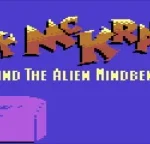Hey there, fellow gamers! Ever wondered what makes an adventure game truly unforgettable? Enter Loom, a LucasArts classic that flipped conventional gaming on its head! Did you know that Loom was released back in 1990, yet it still captivates audiences to this day? With its unique musical interface, compelling storyline, and beautifully constructed fantasy world, Loom isn’t just another adventure game—it’s a piece of gaming art! Let’s embark on this magical journey and explore what makes Loom a standout gem in the world of interactive storytelling. Ready? Let’s dive right in!
Table of Contents
The Enchanting World of Loom
Let me take you on a walk down memory lane to my first encounter with „Loom.“ Picture this: a vintage computer, the unmistakable whir of a floppy drive, and me, a curious teen, utterly captivated by the game’s setting—the mystical lands of the Great Guilds. Loom was unlike anything I’d seen before. As I ventured into its magical realm, I felt like I’d stumbled upon a hidden universe where weavers spun the threads of reality itself. The world of Loom was vibrant yet haunting—oh, how vivid the colors were, yet every screen seemed like a painting you’d hang in a gallery.
The game’s unique narrative style was a masterclass in storytelling. Unlike other games that overloaded me with text and clunky exposition, Loom felt like an epic tale told by a master bard weaving music and magic together. It didn’t just tell a story; it sang it. There was this undeniable emotional pull that gripped me each time I solved a puzzle by creating a melody. The synergy of sight and sound made the experience so immersive that hours felt like minutes.
And the art direction—wow. It set a dreamy, ethereal stage where every pixel painted a scene of wonder and mystery. The avian motifs and floating islands transported me to a land where anything could happen. The simplistic beauty made it feel otherworldly. It wasn’t overcomplicated with chaos, but rather elegantly designed to draw you in.
Innovative Gameplay Mechanics
What truly hooked me was the gameplay itself, particularly the mesmerizing musical interface. No clunky menus or overly complex controls—just music. The distaff, my trusty musical staff, became my wand, and casting spells by playing notes felt so intuitive and fresh. I remember the chills when I first realized every note I played could alter the world around me. Playing Loom felt like being a composer, each puzzle a symphony waiting to be composed.
The ingenuity behind the ‚distaff‘ system is still talked about today. The fact that spells weren’t just commands but melodies. Every action I took felt precise because of this mechanic. There were no cheat codes; there was no shortcut, just magical melodies that needed to be remembered. And surprisingly, not having a traditional inventory didn’t bother me a bit. It was a bold design choice, yes, but it worked. Life’s simpler without a backpack full of random items—let the music do the talking.
Impact and Legacy of Loom
It’s not just me who found Loom unforgettable. Over the years, I’ve seen its influence echo across graphic adventure games like ripples in a pond. Many developers have cited Loom as a critical inspiration, with its groundbreaking narrative and unconventional gameplay. It’s been decades, yet fans still gather to discuss its ingenious design and emotionally engaging storyline—and believe me, that’s not something you see every day.
What’s heartening is how Loom has adapted and thrived over time, gaining critical acclaim and cultivating a devoted fanbase. From tech forums to Reddit threads, it’s celebrated as a cult classic. And with recent digital re-releases, a whole new generation is getting to experience its magic. It’s like meeting an old friend again, but this time bringing them to dinner for your new friends to meet.
Loom vs. Traditional Adventure Games
The thing about Loom is how it slapped traditional adventure games in the face with its unique mechanics and narrative style. Compared to contemporaries, it wasn’t just another point-and-click; it was a symphony. The shift from text-heavy to graphical storytelling was like moving from radio to cinema. Loom taught me appreciation for that transformation—as enriching as a fully orchestrated soundtrack.
There was always debate about simplicity vs. complexity in adventure games, and Loom settled it for some. What if a game could be simple in its mechanics but deep in narrative? Loom showed us it was possible. It proved that less could be more and that an unforgettable story could still unfold within minimalistic gameplay. Complexity isn’t always about clutter; sometimes it’s about clarity in expression.
Fun Facts and Easter Eggs
Loom, like any masterpiece, is filled with hidden gems just waiting to be discovered. I remember spending hours with friends, trying to uncover every easter egg—that thrill when finding an inside joke crafted by the developers. Not many people know that some of Loom’s iconic moments stemmed from real-life inspirations and cheeky nods to other Lucasfilm Games classics. It was like a treasure hunt, with developers themselves chuckling in some far-off studio at our surprise.
The trivia around Loom’s development process is mind-blowing. To think the creators once considered a full trilogy and even penned scripts for potential sequels. Only the potential of imagination stopped them. Little moments like the dramatic opening sequence still resonate with gamers today. Everyone who played it knows that feeling when Bobbin Threadbare first unfurled the Swan’s cloth—uniquely magical, never unlike anything else.
In the end, sharing these tales and adventures brings the joy back to the forefront. It feels like reconnecting with an old tapestry of memories every time I talk with someone about Loom. So, whether you’re a seasoned adventurer revisiting this classic, or a newcomer curious to the game, you’ve just got to experience the magic for yourself. Happy adventuring, folks!
Conclusion
Loom isn’t just a game; it’s an experience that redefined interactive storytelling and gaming mechanics. From its musical spells to its engaging narrative, this LucasArts masterpiece has earned its place in gaming history. Whether you’re a seasoned player or new to the genre, Loom promises a journey like no other. So, what are you waiting for? Grab your distaff and let the melodies guide you through this enchanting adventure!



